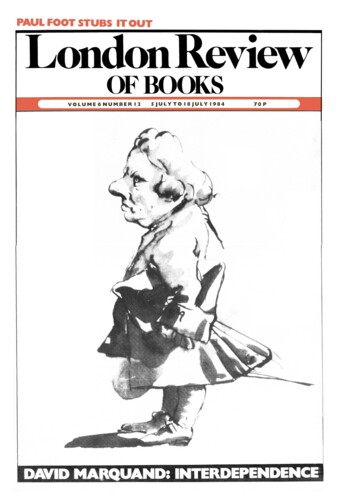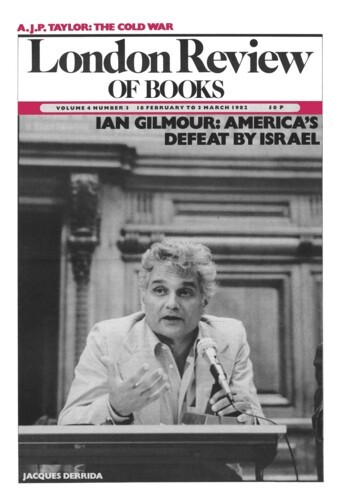In a horizontal posture
Ruth Bernard Yeazell, 5 July 1984
Shut off from more immediate contact with others, the ailing Elizabeth Barrett Barrett was a prodigious correspondent – as these three heavy volumes amply testify. Like one of Richardson’s immured heroines, she boasts of her skill at writing ‘in a horizontal posture’. ‘I can write as well or as badly when I lie down, as at a desk,’ she announced soon after she began corresponding with Mary Russell Mitford, and more than once she urged the older writer to lessen the strain of fatigue or illness by adopting the practice. Though Barrett was imprisoned by a peculiarly Victorian combination of female invalidism and paternal rigidity rather than by a threatening seducer, her own life would eventually yield enough romantic intrigue even for the pen of a Richardsonian heroine. The history of the Browning courtship and elopement seems made for storytelling, and beginning with the correspondence of the lovers themselves, it has of course been told many times. The nearly five hundred letters to Mitford collected here represent the largest number Barrett wrote to a single correspondent; they open in 1836, when the poet had just turned 30 and the Barretts had not yet moved to Wimpole Street, and end when the Brownings had been living almost seven years in Casa Guidi, the 15th-century Florentine palace in which they took up permanent residence after the liberating flight to Europe. Yet the events which loom so large in most popular accounts of these years figure very little in these documents. That EBB, as she signed herself, nonetheless managed to correspond so voluminously with her ‘ever dearest Miss Mitford’ might well prompt reflection on the arbitrary proportions between any written record and a life. But it also suggests that for the professional writer, at least, there is always more than one story to tell. And these letters are above all the record of a literary relation.–


